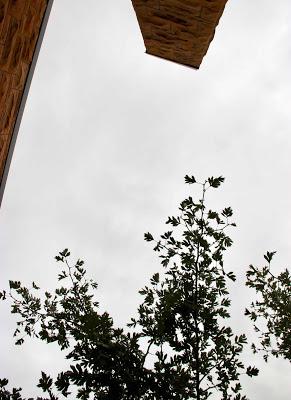 Being a Tree Follower, it’s time for me to post my monthly report at the virtual gathering kindly hosted by The Squirrelbasket. This year I’m following a pair of hawthorn trees growing by the building that houses the Department of Visual & Literary Arts at the University of Wyoming. Most likely these are Russian Hawthornes, Crataegus ambigua. This species is distinctive for its deeply-lobed leaves, visible above against the threatening gray sky.
Being a Tree Follower, it’s time for me to post my monthly report at the virtual gathering kindly hosted by The Squirrelbasket. This year I’m following a pair of hawthorn trees growing by the building that houses the Department of Visual & Literary Arts at the University of Wyoming. Most likely these are Russian Hawthornes, Crataegus ambigua. This species is distinctive for its deeply-lobed leaves, visible above against the threatening gray sky.Russian Hawthorn isn’t native to Wyoming, nor even to North America. It ranges from western Asia into eastern Europe. But it’s popular here for landscaping, even though we have many native hawthorn species to choose from—169 in fact, based on the recent treatment by James Phipps in the Flora of North America.To his credit, Dr. Phipps spent extensive time in the field, and also studied vast quantities of hawthorn herbarium specimens. His approach was “mainly conservative” yet yielded 169 species in North America, including 17 hybrids. His treatment of Crataegus was “the first attempted for the whole flora area since the work of J. Torrey and A. Gray (1838–1843).”There’s a reason why botanists ignored hawthorns for so long—they’re devilishly diverse. This very brief excerpt from Phipps’s introduction to the genus gives you a taste of the abundant and confusing variation present in hawthorns (read more here):
“Because of evolutionary implications, infraspecific variation is given considerable attention. Levels of variation [within a single species] in some cases exceed those of woody sexual species of comparable abundance and range yet may not lead to clear dissection into several less variable species. Where high levels of variation occur, varieties are not necessarily recognized, either due to insufficient study or simply because the variation appears chaotic.” [italics added]How did Dr. Phipps stay sane? I couldn’t do it!!
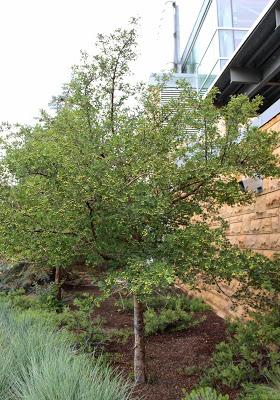
(Not my tree.)
Now for my visit to the Department of Visual and Literary Arts to see “my trees”. The mosquitos were gone, but it was raining a bit, so it was another quick visit. Some of the hawthorns nearby were covered in immature fruit, visible even from a distance—for example the one above. Closer view below.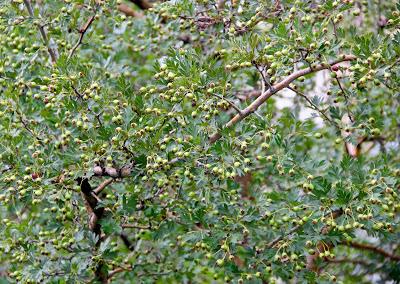
(Nor is this.)
Others were almost bare of fruit, for example, mine. Each of my two trees currently has one or two small clusters of fruit (photos below).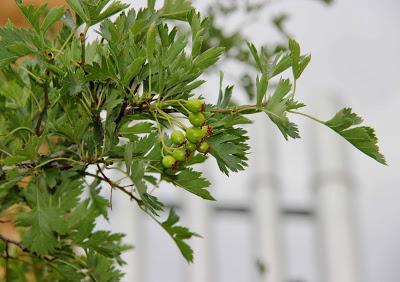
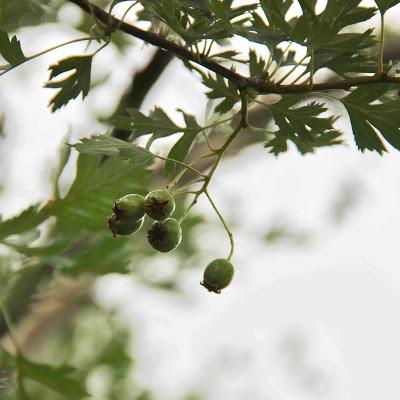 The multicolored young leaves were lovely. Note the bracts at the base of the leaf stems (botany geeks would say stipules at the base of the petioles). They’re also deeply-lobed, like the leaves.
The multicolored young leaves were lovely. Note the bracts at the base of the leaf stems (botany geeks would say stipules at the base of the petioles). They’re also deeply-lobed, like the leaves.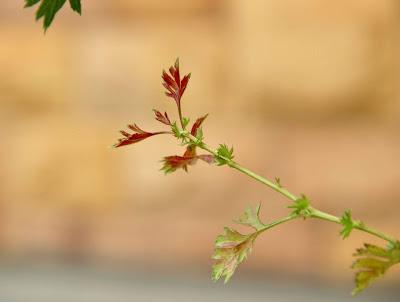
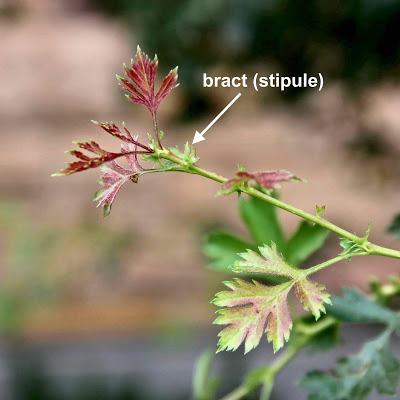 I decided that was enough tree photography; it was time to enjoy some art. The Woman at the Entrance looked unfazed by the weather. It appears she never abandons her post—whether snow, mosquitos, or rain.
I decided that was enough tree photography; it was time to enjoy some art. The Woman at the Entrance looked unfazed by the weather. It appears she never abandons her post—whether snow, mosquitos, or rain.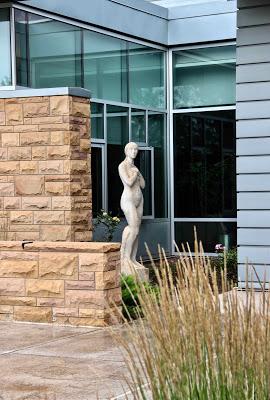
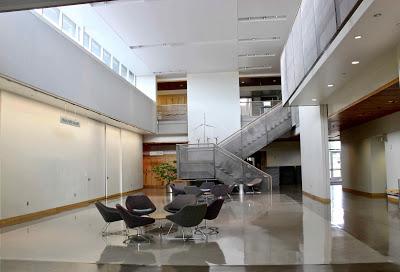 But there were no exhibits. The Atrium and Galleries were empty (summer break I guess). So I wandered around, to good effect. I found a way to commune with the Guardians of the Atrium, who keep an eye on things from the second floor.
But there were no exhibits. The Atrium and Galleries were empty (summer break I guess). So I wandered around, to good effect. I found a way to commune with the Guardians of the Atrium, who keep an eye on things from the second floor.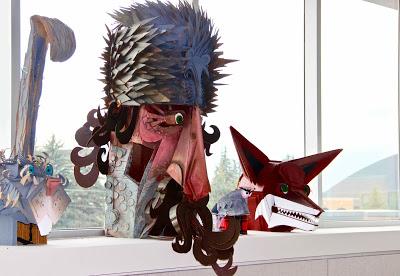
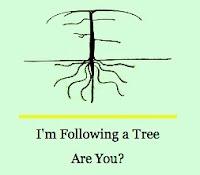 More news of tree-following can be found here. Does it sound interesting? Consider joining us—you can jump in any month you wish!
More news of tree-following can be found here. Does it sound interesting? Consider joining us—you can jump in any month you wish!
